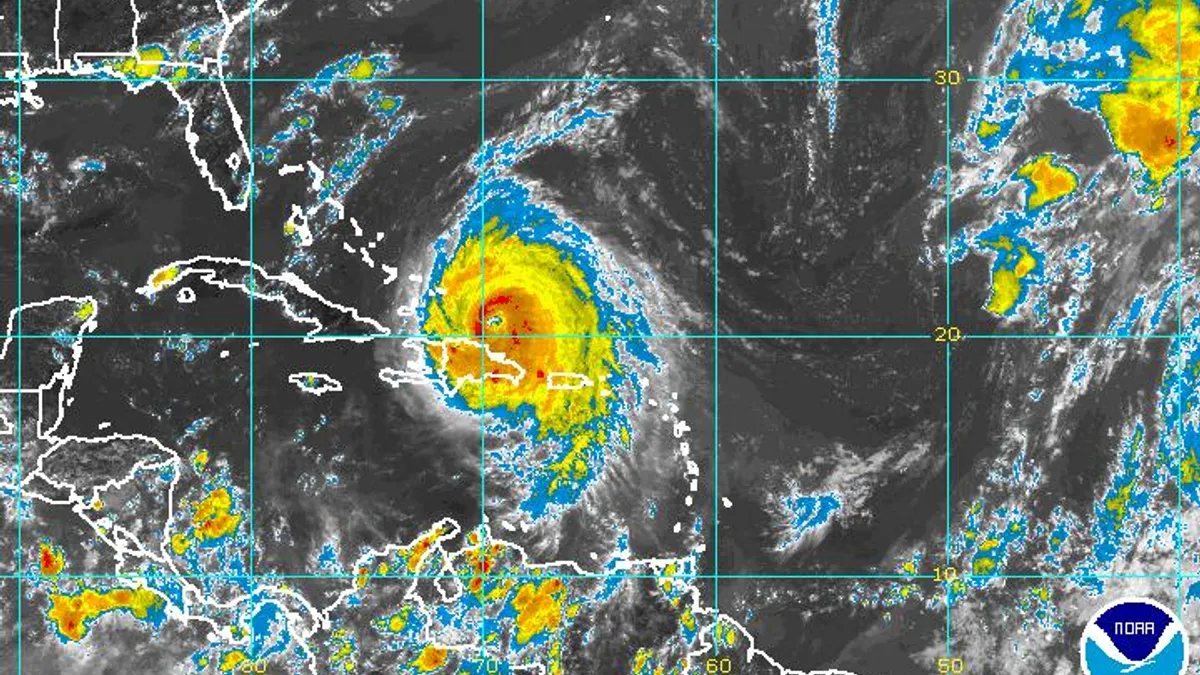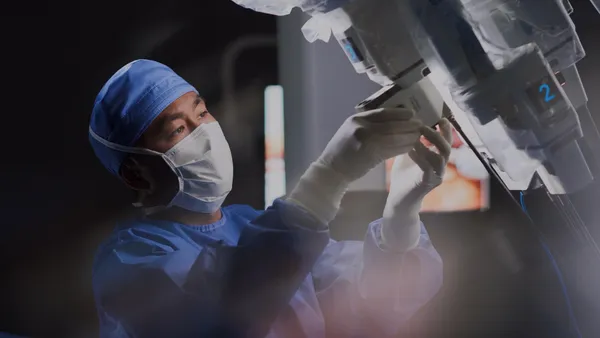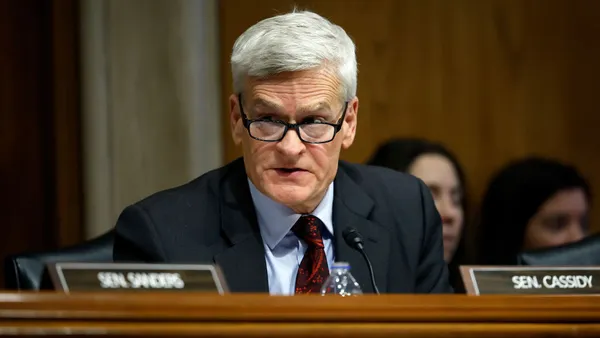Dive Brief:
- B. Braun Medical announced Tuesday it is investing $1 billion into new and existing IV fluid manufacturing facilities to address the IV solution shortage exacerbated by Hurricane Maria's making landfall in Puerto Rico in 2017.
- The company will open a new manufacturing plant in Daytona Beach, Florida, update an existing facility in Irvine, California, and expand production at its factory in Allentown, Pennsylvania.
- B. Braun is also building out its supply network by opening a new distribution facility in Daytona Beach and enhancing distribution hubs in Ontario, California, and Breinigsville, Pennsylvania.
Dive Insight:
Baxter, one of the largest IV bag makers, has struggled to regain market share after its manufacturing facilities in Puerto Rico were damaged by Hurricane Maria.
In the first quarter of 2019, sales in its medication delivery devices unit declined 6%.
Nearly two years after the storm, the dearth of sodium chloride 0.9% injection bags continues, according to FDA's drug shortage database. B. Braun appears to sense a market opportunity to address the supply chain challenges.
B. Braun CEO Caroll Neubauer said the investment is intended to help prevent future IV fluid shortages and ensure hospitals have a consistent supply of the product, which is often used to reconstitute and deliver drugs to patients. The American Hospital Association raised an alarm following the hurricane that patient care is at risk due to the shortage.
"IV fluids are a fundamental component of patient care to hydrate patients, administer drugs, and replace lost blood volume. In recent years, the U.S. market has seen destructive weather events and severe influenza seasons contributing to major nationwide IV fluid shortages. These shortages forced health care professionals and facilities to delay patient treatments or use alternate techniques," Maria Angela Karpf, B. Braun medical affairs corporate vice president, said in a statement.
Baxter received permission from FDA to temporarily import IV bags from its facilities in Ireland, Australia, Canada, Mexico, Brazil and England to help address the shortage, but there are no plans for the company to import additional lots of IV saline at this time, FDA spokesperson Lyndsay Meyer told MedTech Dive. The company still has imported saline in the United States within expiry, so FDA is maintaining relevant Dear Health Care Letters on its shortage database, she said.
Since 2016, Baxter has spent more than $500 million on U.S. IV solution manufacturing, Eric Tatro, senior manager of global communications at Baxter, told MedTech Dive.
In July 2018, FDA created a task force to combat drug shortages. It is currently working to determine if there are certain government regulations or reimbursement challenges that "may unintentionally play a role in drug shortages," Meyer said.
"The Task Force has also begun drafting the formal report to Congress with a focus on the root causes of drug shortages and importantly, potential and lasting solutions," she said. The report is expected to be completed by the end of the year.











